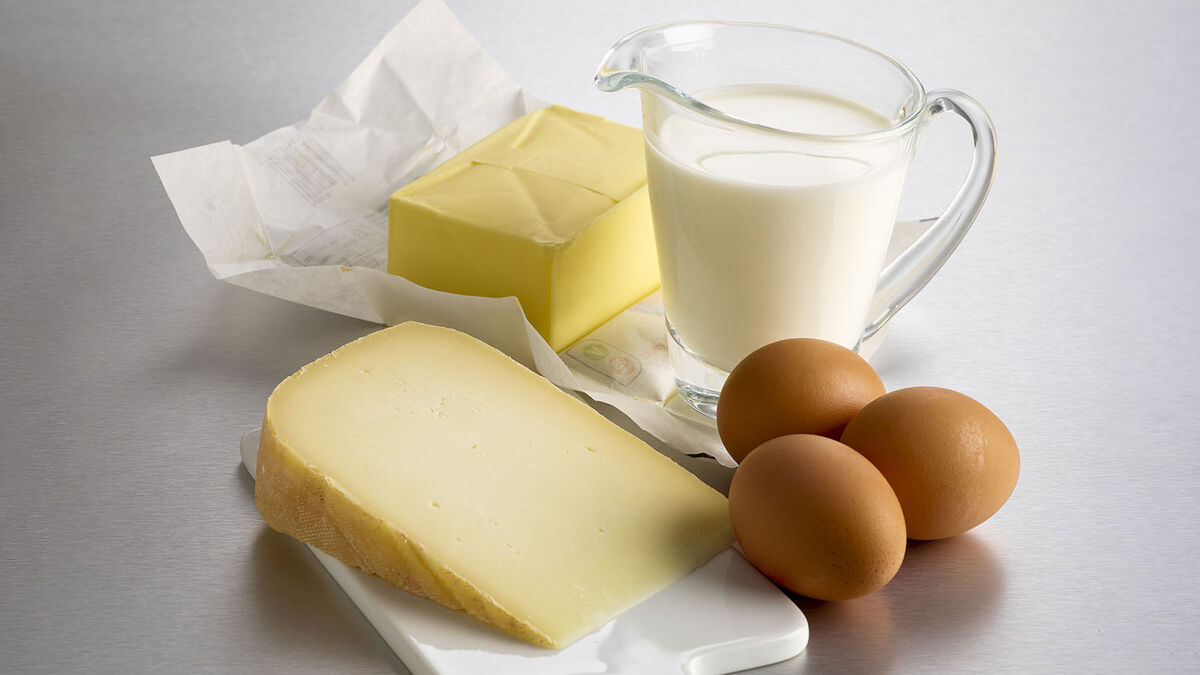
Example of Saturated Fats
You may have heard of lipids before. But what are they? A lipid is a fat-like molecule and is a major building block of the cells of animals. Lipids are organic, meaning that they contain carbon atoms, and they do not dissolve in water. Keep reading to find examples of the different types of lipids.
Examples of Types of Lipids
Many types of lipids are part of your everyday diet. Other types of lipids form naturally in your body. No matter how they get there, lipids are an important part of our lives and our health. Here are some lipid examples that you might discover in your body – and where you can find them in a healthy diet.
Fats
Fats make up the largest category of lipids, and also go by the terms triacylglycerols, triglycerides, and glycerolipids. There are several types of fats. Some may be unhealthy in large amounts, such as saturated fats, while others should be avoided altogether, like trans fats. Foods with omega-3 fats, however, can reduce your risk of a heart attack.
Type of Fat | Basic Information | Where to Find It |
Saturated Fats | Solid substance when it is at room temperature | Animal foods (butter, meat, cheese, milk, etc.) Tropical oils (palm oil, cocoa butter, coconut oil) |
Unsaturated Fats (monounsaturated) | Liquid when it is at room temperature | Vegetable oils (olive, peanut, canola oils) |
Unsaturated Fats (polyunsaturated) | Two types of fats: Omega-6 and Omega-3 | Plant-based oils (Omega-6: sunflower, sesame, corn, soybean, and safflower oils) Seafood (Omega-3: shellfish, salmon, herring, sardines, anchovies, and trout) Nuts and seeds: (Omega-3: walnuts, flaxseed, soybeans) |
Trans Fats (trans polyunsaturated fatty acids) | Hydrogenated fats make foods crispy | Processed foods (potato chips, crackers, cookies) Dressings and spreads (salad dressing, margarine) |
Steroids
Many lipids occur naturally in your body as steroid lipids. Even though steroid lipids appear different from other lipids, they are also insoluble in water. Here are some examples of steroid lipids:
Type of Steroid | Function in the Body |
Cholesterol | Assists with digestion |
Estrogen | Female hormone |
Testosterone | Male hormone |
Bile Salts | Lipids found in human intestinal bile |
Cortisol | Produced in response to stress |
Waxes
Waxes are another type of naturally occurring lipid. They have high melting points (40 degrees Celsius), making them helpful as candles or sealants. Some waxes can be found in the human body, and others are made by insects, animals, and plants.
Type of Wax | Where to Find It | Function |
Beeswax | Beehives | Forms honeycombs and protects larvae |
Earwax | Human ears | Protects insides of ears |
Cutin | Surfaces of plant leaves | Stops water from evaporating from the leaves; protects and seals the plant. |
Preen wax | Feathers of birds | Prevents water from penetrating feathers; keeps bacteria from growing |
Vitamins
Fat-soluble vitamins are lipids. It’s important to have a balance of these types of lipids to keep the body functioning. People with low amounts or imbalanced vitamins can take supplements to help their bodily functions.
Some examples of fat-soluble vitamins include:
Type of Vitamin | Function in the Body | Vitamin-Rich Foods |
Vitamin A | Assists immune function, vision, and reproduction | Colorful fruits and vegetables Whole milk Liver and organ meat |
Vitamin D | Enhance how intestines absorb calcium, zinc, phosphate, iron, and magnesium | Fatty fish (tuna, salmon) Egg yolks Sunlight exposure |
Vitamin E | Protects the human heart and helps protect the body from free radicals (keeps cells healthy) | Nuts, seeds, vegetable oils |
Vitamin K | Allows blood to clot; may aid with bone strength in elderly people | Leafy vegetables (kale, spinach, collards, romaine, green leaf lettuce, brussels sprouts, broccoli, cauliflower, cabbage) |
Phospholipids
The last category of lipids are phospholipids. These lipids are found in most cell membranes and make up a protective layer between the cell and its outer membrane. Some foods that contain phospholipids include:
Type of Phospholipid | Function in the Body | Vitamin-Rich Foods |
Phosphatidylcholine | Aids neural processes (learning and reasoning) | Red meat Fish |
Phosphatidylserine | Regulates heartbeat and bone repair | Poultry Carrots Rice |
Phosphatidylethanolamine | Maintains neural tissue (cognition and memory) | Dairy products Chocolate |
Lipid Structure
The chemical makeup and structure of a lipid determines whether it’s a fat, steroid, wax, or phospholipid. It allows them to pass through a body easily, insulate nerve cells and block surfaces from water. Similarities between lipid structures include:
- They are made up of carbon, hydrogen, and oxygen (same as carbohydrates, but more hydrogen than oxygen molecules).
- Lipids are hydrophobic and are not water soluble.
- Most lipids are made up of long hydrocarbon chains.
Lipids are Part of Our Everyday Lives
It’s easy to think that we should cut lipids out of our diet to stay healthy. However, human bodies require many lipids to properly function. If you’d like some tips on avoiding saturated and trans fats, check out an article that features several examples of monounsaturated fats and where to find them.